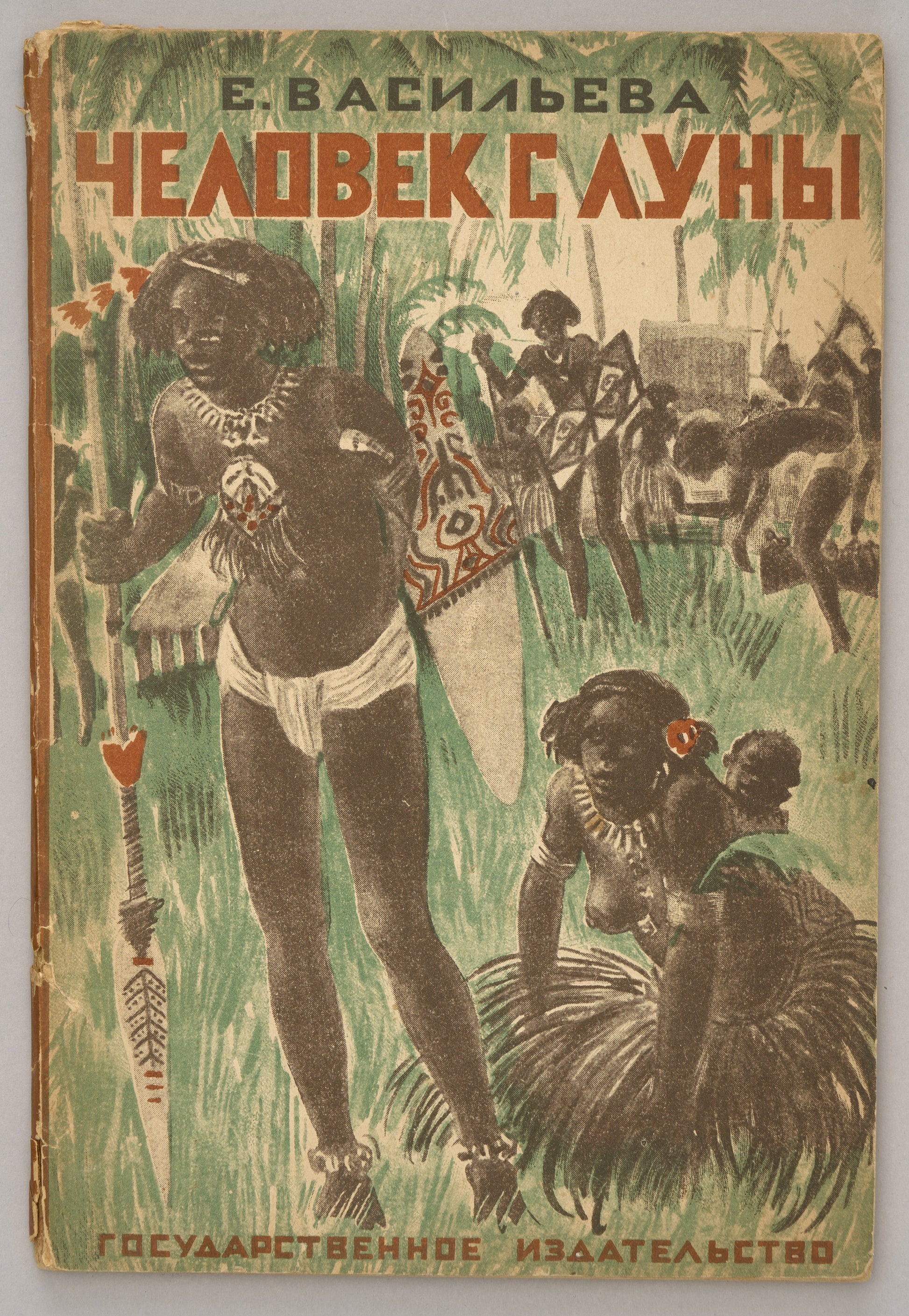Vasilʹeva, Elisaveta
The Man from the Moon: Miklouho-Maclay. The most mysterious Russian female poet wrote about one of the earliest followers of Charles Darwin.
The Man from the Moon: Miklouho-Maclay. The most mysterious Russian female poet wrote about one of the earliest followers of Charles Darwin.
Couldn't load pickup availability
Vasilʹeva, E. [The Man from the Moon: Miklouho-Maclay]. Chelovek s Luny: Miklukha-Maklai.
Second edition.
Illustrations [and cover] by V. Vladimirov.
Moskva-Leningrad, Gosudarstvennoe izdatelstvo, 1929.
8vo, 84, [4] pp., ill., port., map.
In original pictorial wrappers.
In good condition, lightly rubbed, small losses along spine.
One of 10 000 copies published.
Elisaveta Vasil’eva (1887-1928), a Russian female poet, more famously known by her literary pseudonym Cherubina de Gabriak, is the author of this book. As a member of the Anthroposophic Society, she was searched and interrogated by the State Political Directorate since 1921. In 1927 she was exiled to Tashkent where she died of liver cancer.
The book is illustrated with images of tribal artifacts created by the talanted painter, graphic artist, and book designer Vasiliy Vladimirov (1880-1931). He also was a close friend of the Russian novelist and Symbolist poet Andrei Bely and participated in the Argonauts literary circle. Vladimirov studied at the Academy of Fine Arts in Munich under baron Hugo von Habermann.
This popular science book for children is devoted to a Russian explorer Nicholas Miklouho-Maclay (1846-1888) who works as an ethnologist, anthropologist, and biologist and became famous as one the earliest scientist to settle among and study indigenous people of New Guinea. Although European navigators visited the islands, European researchers knew little of the inhabitants until the 1870s, when Miklouho-Maclay made a number of expeditions to New Guinea, spending several years living among native tribes, and described their way of life in a comprehensive treatise.
The book is compiled from indigenous people’s thoughts (of course fictional) about the white man and extracts from the diary of Miklouho-Maclay. Honestly, the explorer was rediscovered by his compatriots only after the Russian Revolution: his travel journals were not published until 1923, and an annotated five-volume collection of his works was published in 1950-1954.
We couldn’t trace any copy of this edition in the USA or European libraries via OCLC. The UC Berkely Library has microfiche only. Waseda University Lirary has a copy of the first edition of the book.










